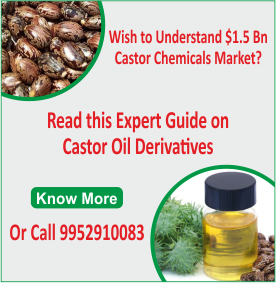Ricinoleic Acid - from The Castor Oil Dictionary
Ricinoleic Acid - from The Castor Oil Dictionary
- Castor oil is a unique substance with an ancient history. Folk healers the world over have used it to treat a wide variety of conditions. Castor oil's effectiveness is probably due in part to its unusual chemical composition—a triglyceride of fatty acids with almost 90 percent of that fatty acid content consisting of ricinoleic acid. To my knowledge, ricinoleic acid is not found in any other substance, and the high concentration of this unusual, unsaturated fatty acid is thought to be responsible for castor oil's remarkable healing abilities.
- Ricinoleic acid is effective in preventing the growth of numerous species of viruses, bacteria, yeasts, and molds. It's successful as a topical treatment for ringworm, keratoses, skin inflammation, abrasions, fungal-infected finger- and toenails, acne, and chronic pruritus (itching). Generally, for these conditions the affected area is wrapped each night in a castor oil-soaked cloth.
- Ricinoleic Acid (12-hydroxy-9-octadecenoic acid) is obtained by the hydrolysis of Castor Oil (Hydrolysis from Wikipedia). It is a light colored liquid with a ricinoleic content of approximately 90%. Primary uses include, coatings, plastics, inks and cosmetics.
- Ricinoleic acid is the active component of castor oil.
- Poly(anhydrides) are hydrolytically degradable polymers which have been used as vehicles for controlled delivery of drugs. A new class of biodegradable polyanhydrides based on ricinoleic acid, had been synthesized
- An unsaturated fatty acid, C18H34O3, prepared from castor oil and used in making soaps and in textile finishing.
- Biochemical studies have revealed that ricinoleic acid is produced in castor by the direct hydroxylation of the common fatty acid, oleic acid (18:1). The hydroxylation reaction is catalysed by a single, highly efficient enzyme, the fatty acid hydroxylase.
- Ricinoleic acid, a hydroxy fatty acid (Fats, Oils & Fatty Acids – from Scientific Psychic), makes up 85–90% of castor oil and is responsible for many of its desirable properties.
- Ricinoleic acid, amongst other uses, is used as a bactericide. Hence, washing wounds with ricinoleic acid at prescribed dilution levels is sometimes recommended.
- Ricin, a toxic protein in the seeds, acts as a blood coagulant
- Macrolactones and polyesters can be derived from Ricinoleic Acid
- Castor oil is unique in that it is a triacylglycerol (TAG) oil in which nearly 90% of the fatty acids are the unusual fatty acid, Ricinoleic acid. Hydroxy fatty acids are only rarely found in plants. While some species are known to produce ricinoleic acid, none make an oil of the acyl purity of castor oil.
- Ricinoleic acid has been used in contraceptive jellies
- Picture Of Ricinoleic Acid – Pic from Linnaeus.net
Glossary of Castor Oil Terms
Castor Bean, Castor Extract, Castor Meal/Castor Cake, Castor Oil, Castor Oil Chemicals, Castor Oil Derivatives, Castor Oil BP Grade, Castor Oil FSG, Castor Oil Glossary Main Index, Castor Oil USP, Castor Plant, Castor Seed, Commercial Castor Oil, De-oiled Castor Cake, Dehydrated Castor Oil, Deodorised Castor Oil, European Pharmacopia Castor Oil, Hydrogenated Castor Oil, Industrial Castor Oil, Ricinoleic Acid, Sulfonated Castor Oil, Turkey Red Oil
The Castor Oil Dictionary is intended to be a dictionary & glossary resource for castor oil related terms, providing meanings, definition & explanations for these terms and words.








